At dynamic equilibrium the reaction on both sides occur at the same rate and the mass on both sides of the equilibrium does not undergo any change. This condition can be achieved only when the value of ΔG is
ΔG=−1
ΔG=+1
ΔG=0
ΔG=+2
The correct Answer is:C
At equilibrium, ΔG=0
Topper's Solved these Questions
- CHEMICAL THERMODYNAMICS AND ENERGETICSBook:MARVEL PUBLICATIONChapter:CHEMICAL THERMODYNAMICS AND ENERGETICSExercise:MULTIPLE CHOICE QUESTIONS (PREVIOUS YEARS ENTRANCE EXAMS)
Explore 76 Videos
- CHEMICAL THERMODYNAMICS AND ENERGETICSBook:MARVEL PUBLICATIONChapter:CHEMICAL THERMODYNAMICS AND ENERGETICSExercise:MULTIPLE CHOICE QUESTIONS (TEST YOUR GRASP)
Explore 50 Videos
- CHEMICAL THERMODYNAMICS AND ENERGETICSBook:MARVEL PUBLICATIONChapter:CHEMICAL THERMODYNAMICS AND ENERGETICSExercise:MULTIPLE CHOICE QUESTIONS (Third Law of Thermodynamics)
Explore 6 Videos
- CHEMICAL KINETICSBook:MARVEL PUBLICATIONChapter:CHEMICAL KINETICSExercise:TEST YOUR GRASP
Explore 50 Videos
- CHEMISTRIY IN EVERYDAY LIFE Book:MARVEL PUBLICATIONChapter:CHEMISTRIY IN EVERYDAY LIFE Exercise:TEST YOUR GRAPS
Explore 24 Videos
Similar Questions
Knowledge Check
The reaction which is in dynamic equilibrium, ensured us, that the reaction is reversible . But if that the reaction is in equilibrium. The reaction quotient predict either the reversible reaction is in equilibrium or tries to achieve equilibrium. In those reactions which have not achieved equilibrium, we obtain reaction quotient Qc in place of equilibrium constant (Kc) by substituting the concentration of reactant and product at the time, at whih we have to calculate the value of Qc . To determine the direction at which the net reaction will proceed to achieve equilibrium, we compare values of Qc and Kc. The three possible cases are shown as comparison of Kc and Qc in the following figures.
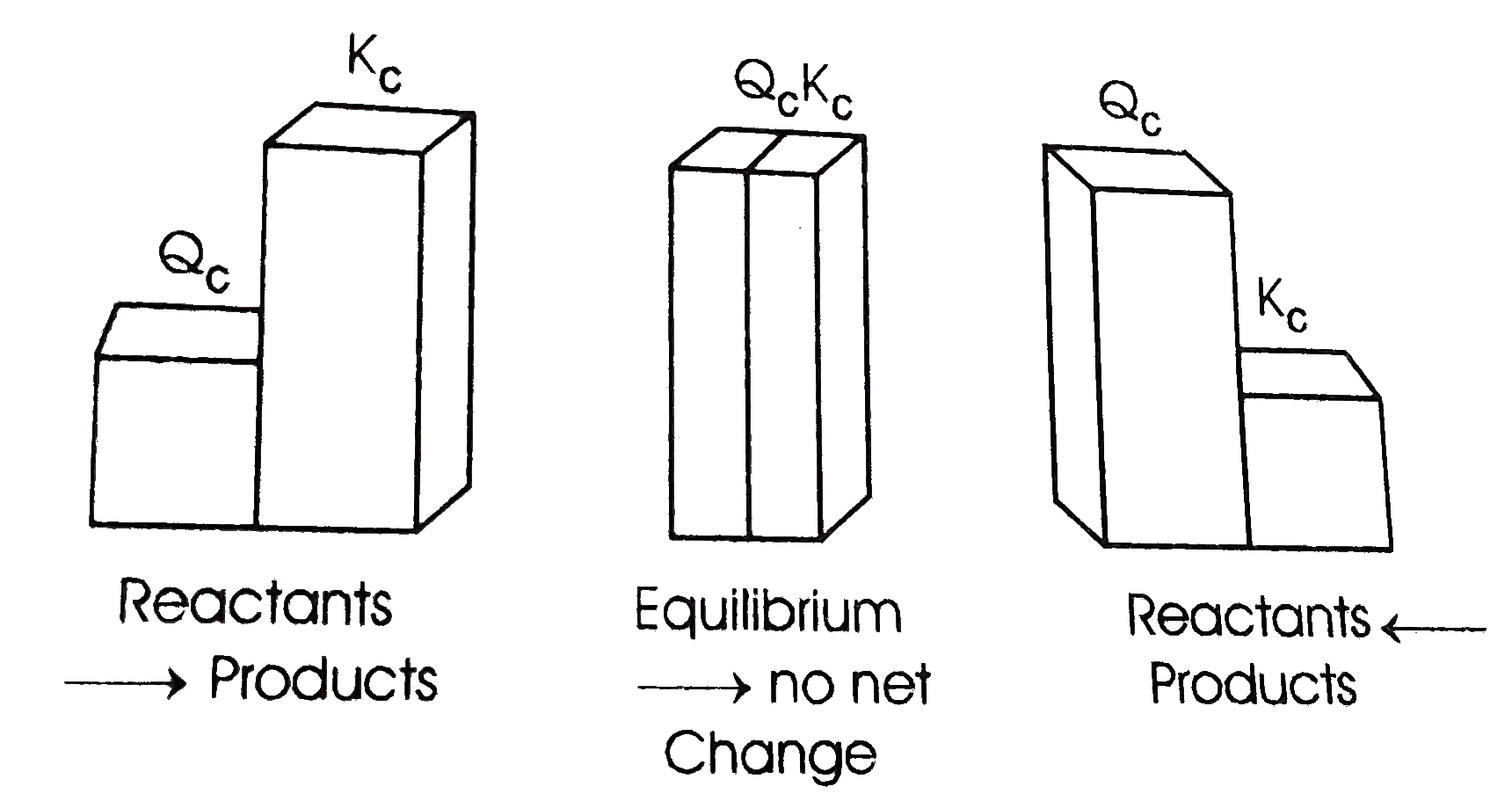
Change in Gibbs free energy, i.e., ΔG is the driving force of any reaction.
For spontaneous reaction , ΔG=−ve
For non-spontaneous reaction , ΔG=+ve
For reaction at equilibrium , ΔG=0
Thermodynamically, we know that
ΔG=ΔG∘+RTlnQ, where Q is reaction quotient and ΔG∘= change in Gibbs energy at standard condition.
For equilibrium A(g)⇔B(g)(Keq=1.732) If the pressure of the system [varied by introducing a stream of A(g) and B (g) is represented by the curve at constant temperature T.
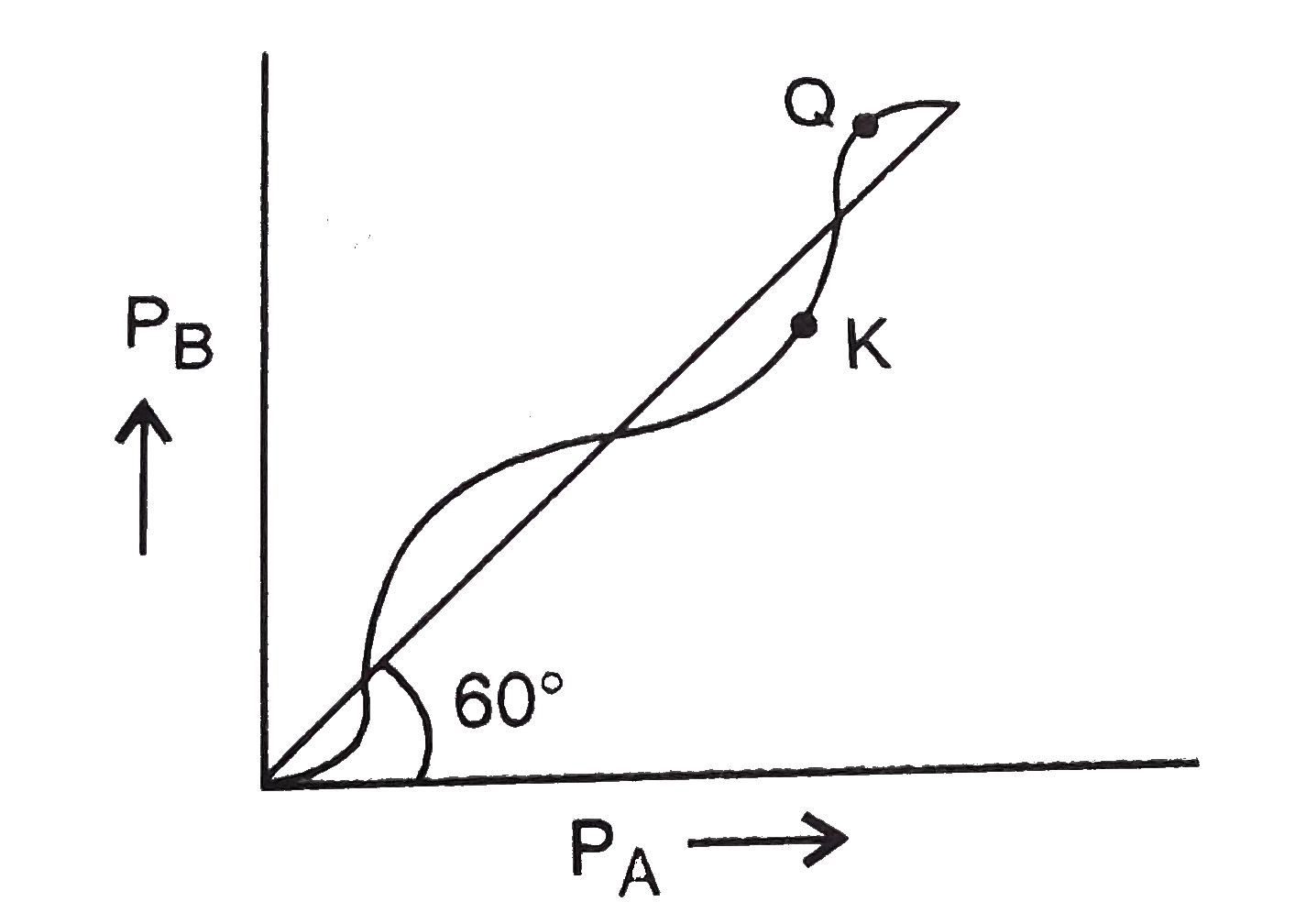
What will be the value of difference of standard Gibbs free energy to Gibbs free energy change at point Q in the figure above ?A−veB+veC0Dcannot be predictedThe reaction which is in dynamic equilibrium, ensured us, that the reaction is reversible . But if that the reaction is in equilibrium. The reaction quotient predict either the reversible reaction is in equilibrium or tries to achieve equilibrium. In those reactions which have not achieved equilibrium, we obtain reaction quotient Qc in place of equilibrium constant (Kc) by substituting the concentration of reactant and product at the time, at whih we have to calculate the value of Qc . To determine the direction at which the net reaction will proceed to achieve equilibrium, we compare values of Qc and Kc. The three possible cases are shown as comparison of Kc and Qc in the following figures.
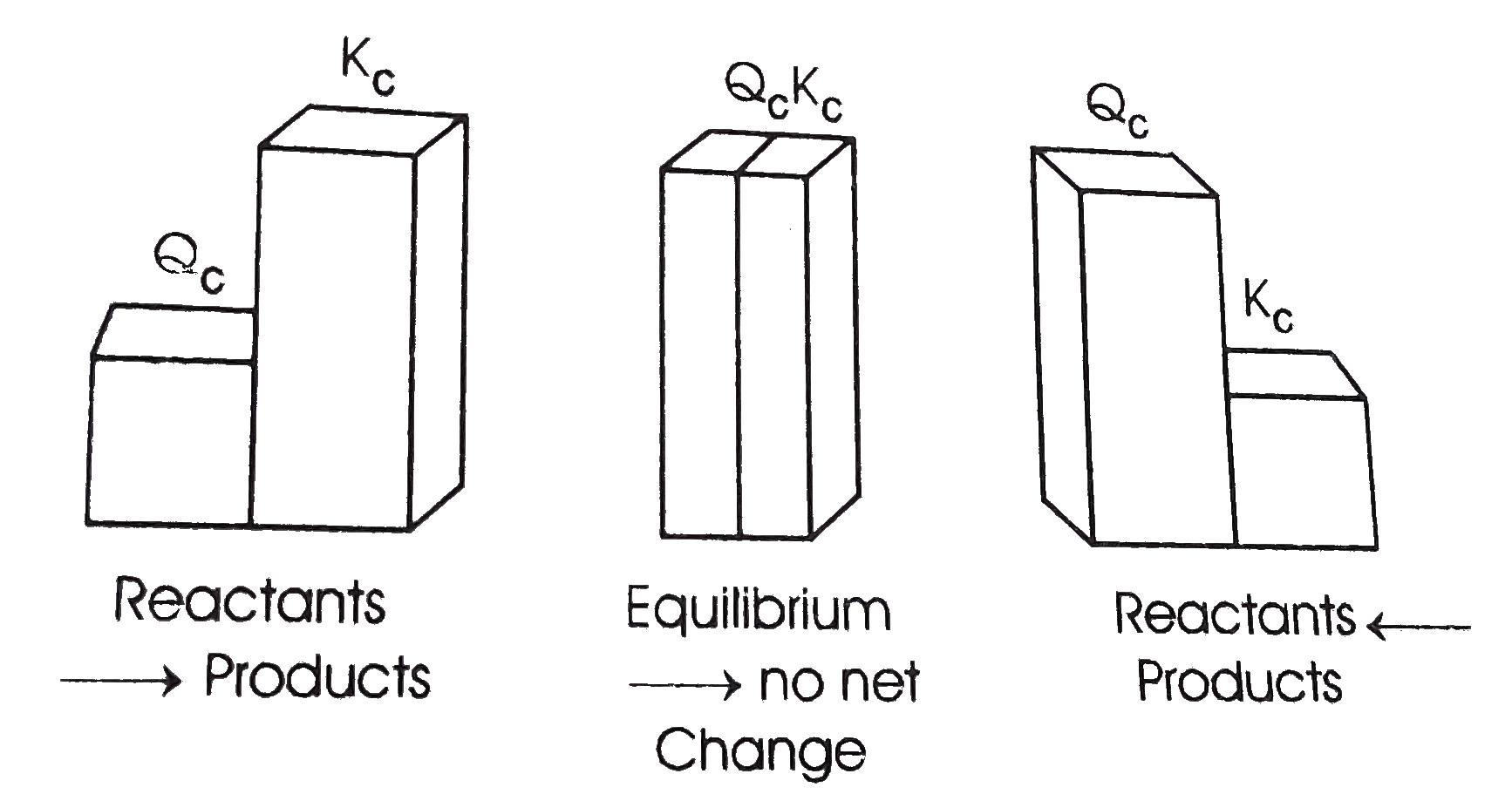
Change in Gibbs free energy, i.e., ΔG is the driving force of any reaction.
For spontaneous reaction , ΔG=−ve
For non-spontaneous reaction , ΔG=+ve
For reaction at equilibrium , ΔG=0
Thermodynamically, we know that
ΔG=ΔG∘+RTlnQ, where Q is reaction quotient and ΔG∘= change in Gibbs energy at standard condition.
For equilibrium A(g)⇔B(g)(Keq=1.732) If the pressure of the system [varied by introducing a stream of A(g) and B (g) is represented by the curve at constant temperature T.

Which of the following is the correct statement at point R in the figure above ?AThe reaction will move in backward direction in order to gain equilibriumBThe reaction will move in forward direction in order to gain equilibriumCΔG of the reaction will be zeroDCannotbe predicted.The reaction which is in dynamic equilibrium, ensured us, that the reaction is reversible . But if that the reaction is in equilibrium. The reaction quotient predict either the reversible reaction is in equilibrium or tries to achieve equilibrium. In those reactions which have not achieved equilibrium, we obtain reaction quotient Qc in place of equilibrium constant (Kc) by substituting the concentration of reactant and product at the time, at whih we have to calculate the value of Qc . To determine the direction at which the net reaction will proceed to achieve equilibrium, we compare values of Qc and Kc. The three possible cases are shown as comparison of Kc and Qc in the following figures.
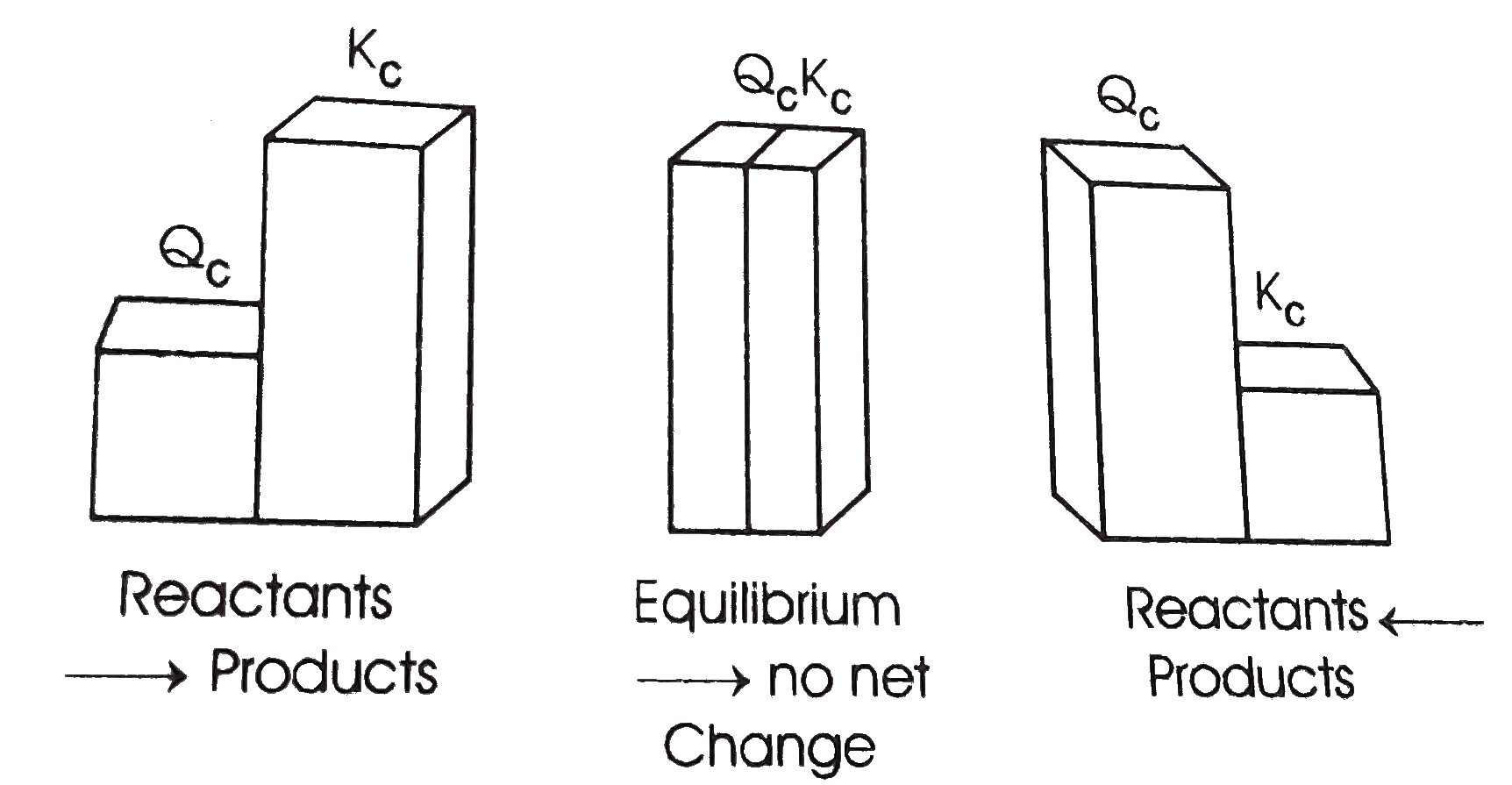
Change in Gibbs free energy, i.e., ΔG is the driving force of any reaction.
For spontaneous reaction , ΔG=−ve
For non-spontaneous reaction , ΔG=+ve
For reaction at equilibrium , ΔG=0
Thermodynamically, we know that
ΔG=ΔG∘+RTlnQ, where Q is reaction quotient and ΔG∘= change in Gibbs energy at standard condition.
For equilibrium A(g)⇔B(g)(Keq=1.732) If the pressure of the system [varied by introducing a stream of A(g) and B (g) is represented by the curve at constant temperature T.
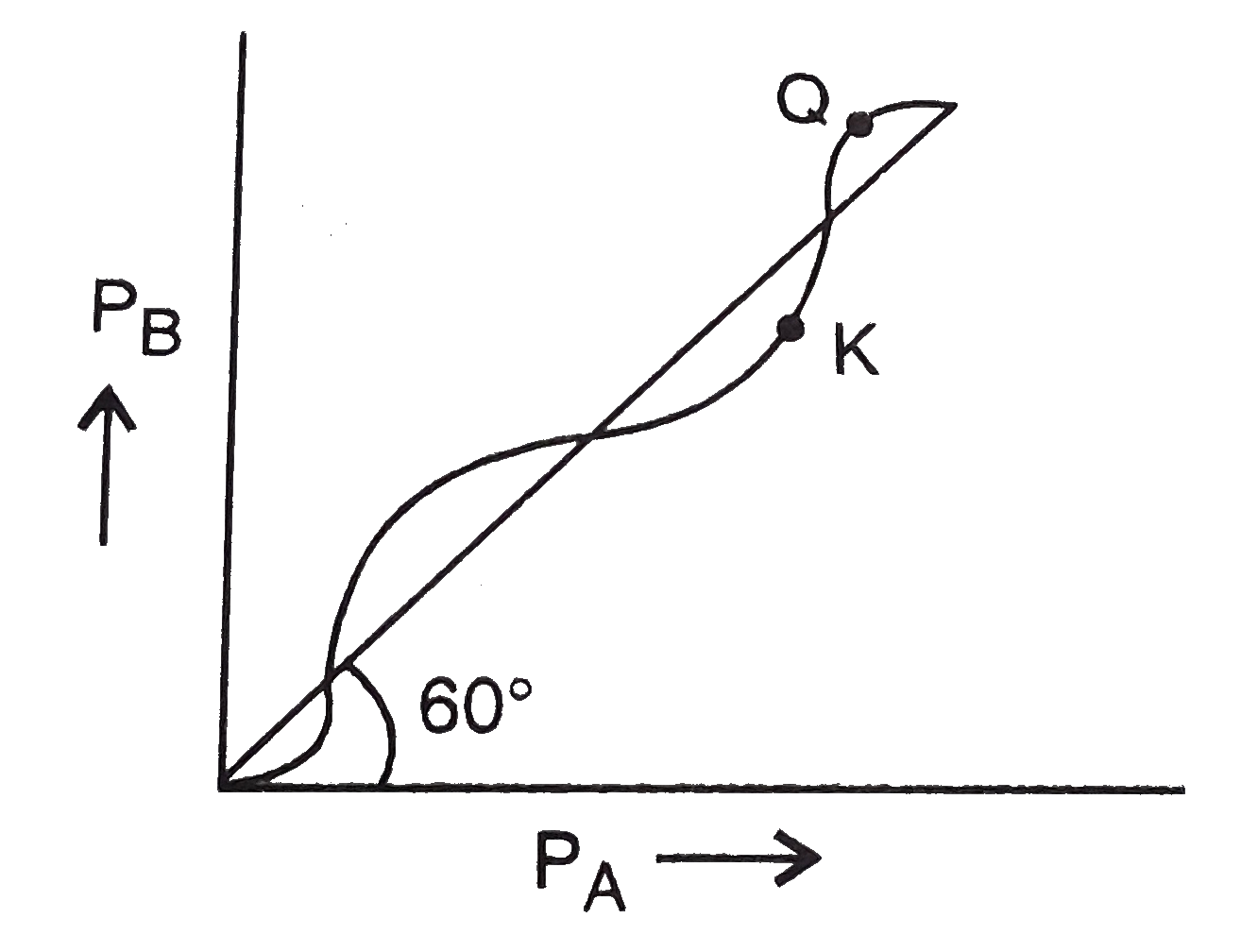
For equilibrium system
N2O4(g)⇔2NO2(g)
N2O4(g) is in a cylinder which is fitted with movable piston. Assume that equilibrium partial pressure of N2O4(g) and NO2(g) are 10 and 14 atmospheres respectively. If the piston of the cylinder is pulled out in such way so that volume of the system than what will be the value of equilibrium partial pressure of the NO2 gas ?A10.7 atmB9.72 atmC5.72 atmD7.72 atm
By adding or subtracting any value to both sides of the inequality, inequality ______. (changes/does not change).
View SolutionBy adding or subtracting any value to both sides of the inequality, inequality ______. (changes/does not change).
View SolutionThe reaction which is in dynamic equilibrium, ensured us, that the reaction is reversible . But if that the reaction is in equilibrium. The reaction quotient predict either the reversible reaction is in equilibrium or tries to achieve equilibrium. In those reactions which have not achieved equilibrium, we obtain reaction quotient Qc in place of equilibrium constant (Kc) by substituting the concentration of reactant and product at the time, at whih we have to calculate the value of Qc . To determine the direction at which the net reaction will proceed to achieve equilibrium, we compare values of Qc and Kc. The three possible cases are shown as comparison of Kc and Qc in the following figures.
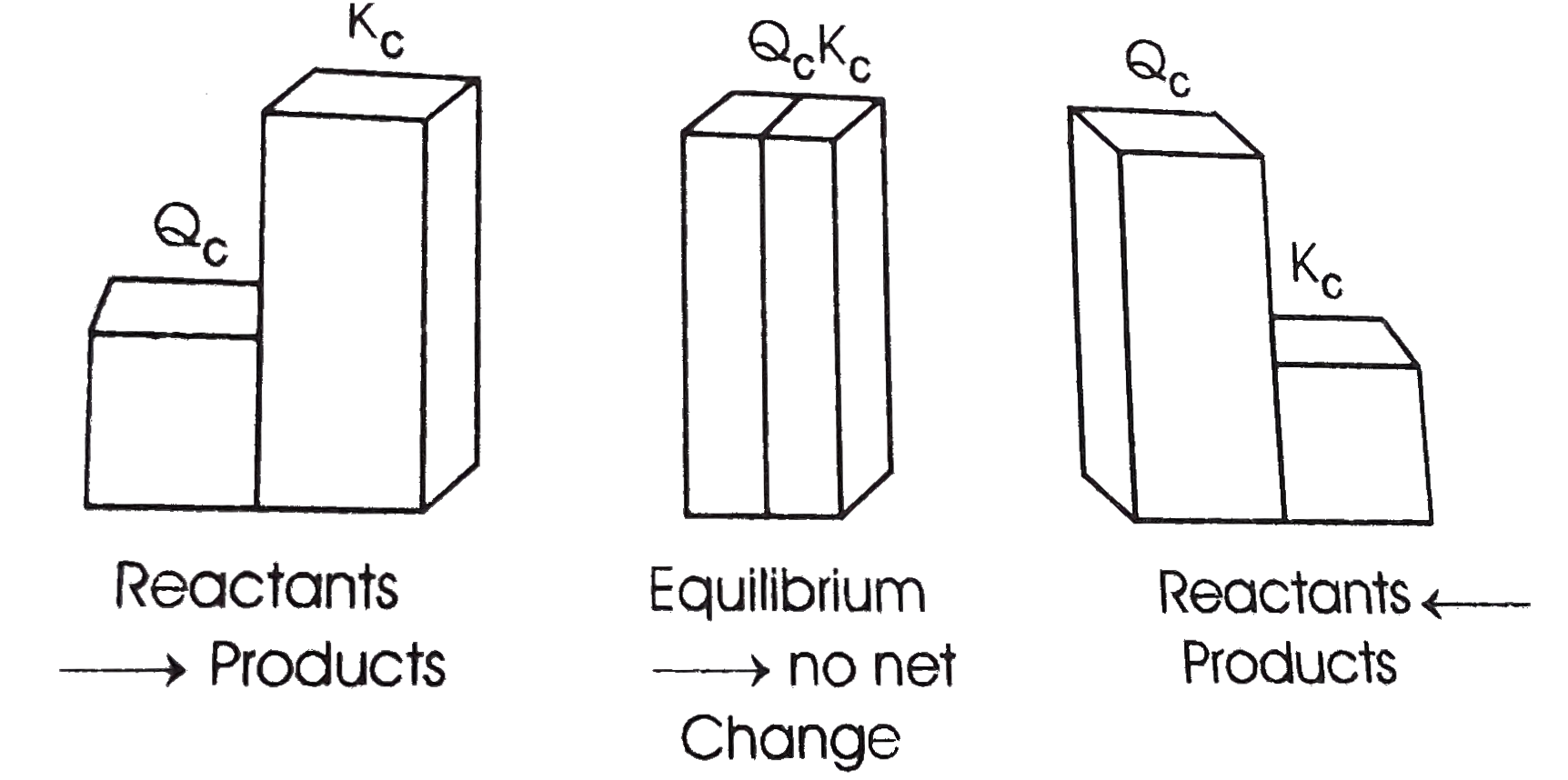
Change in Gibbs free energy, i.e., ΔG is the driving force of any reaction.
For spontaneous reaction , ΔG=−ve
For non-spontaneous reaction , ΔG=+ve
For reaction at equilibrium , ΔG=0
Thermodynamically, we know that
ΔG=ΔG∘+RTlnQ, where Q is reaction quotient and ΔG∘= change in Gibbs energy at standard condition.
For equilibrium A(g)⇔B(g)(Keq=1.732) If the pressure of the system [varied by introducing a stream of A(g) and B (g) is represented by the curve at constant temperature T.
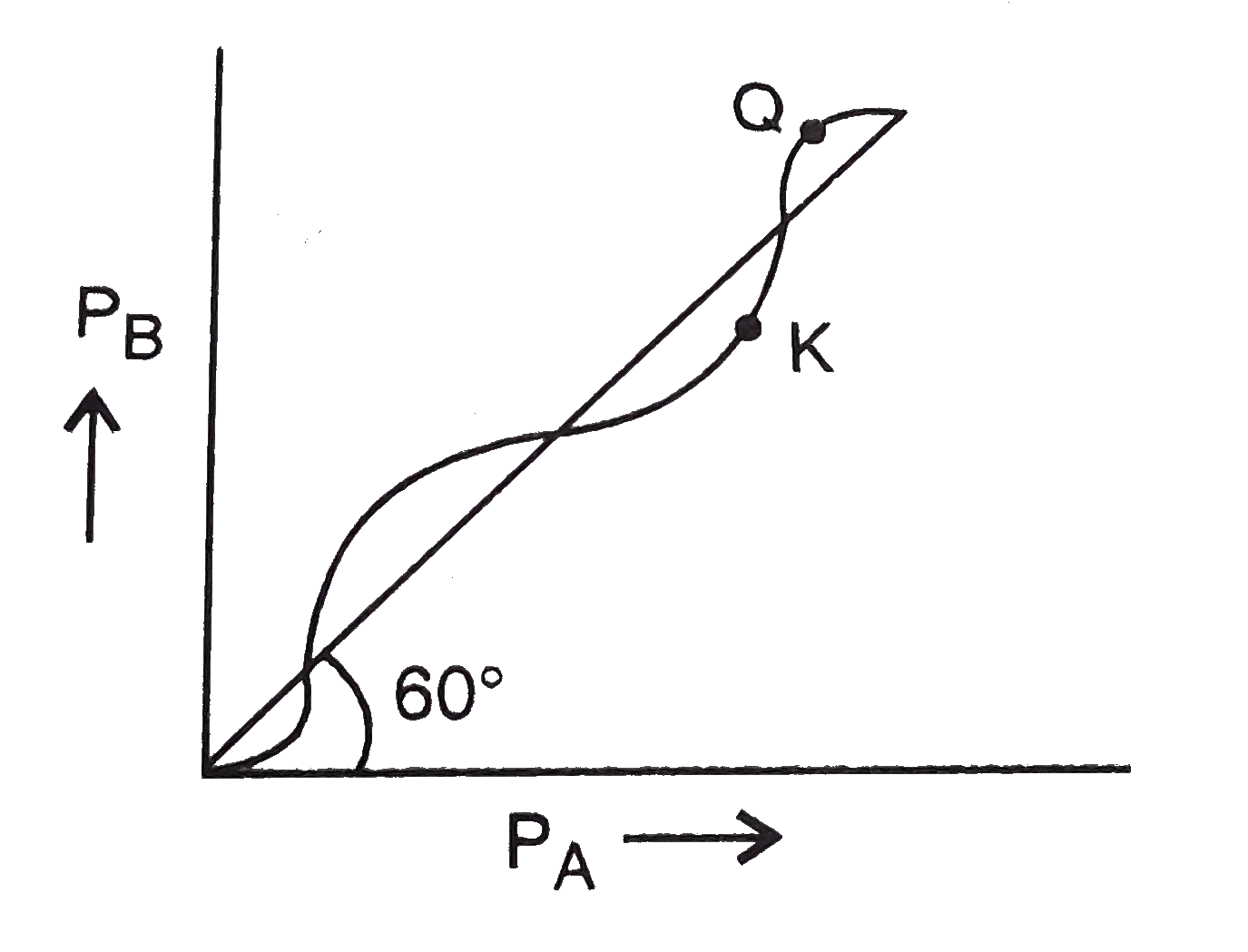
Suppose N2O4(g) is enclosed in a cylinder fitted with a movable piston which attains the following equilibrium
N2O4)(g)⇔2NO2(g)
Given that for the 10 atmosphere pressure of the equilibrium mixture, the content of NO2 is 8×15 ppm. if the piston of cylinder is moved upward in such a manner so that the volume of the gaseous mixture becomes double, then what will be new ppm of NO2(g) in the cylinder ? ( Assuming that the temperature of the cylinder remains constant )
View SolutionThe reaction which is in dynamic equilibrium, ensured us, that the reaction is reversible . But if that the reaction is in equilibrium. The reaction quotient predict either the reversible reaction is in equilibrium or tries to achieve equilibrium. In those reactions which have not achieved equilibrium, we obtain reaction quotient Qc in place of equilibrium constant (Kc) by substituting the concentration of reactant and product at the time, at whih we have to calculate the value of Qc . To determine the direction at which the net reaction will proceed to achieve equilibrium, we compare values of Qc and Kc. The three possible cases are shown as comparison of Kc and Qc in the following figures.
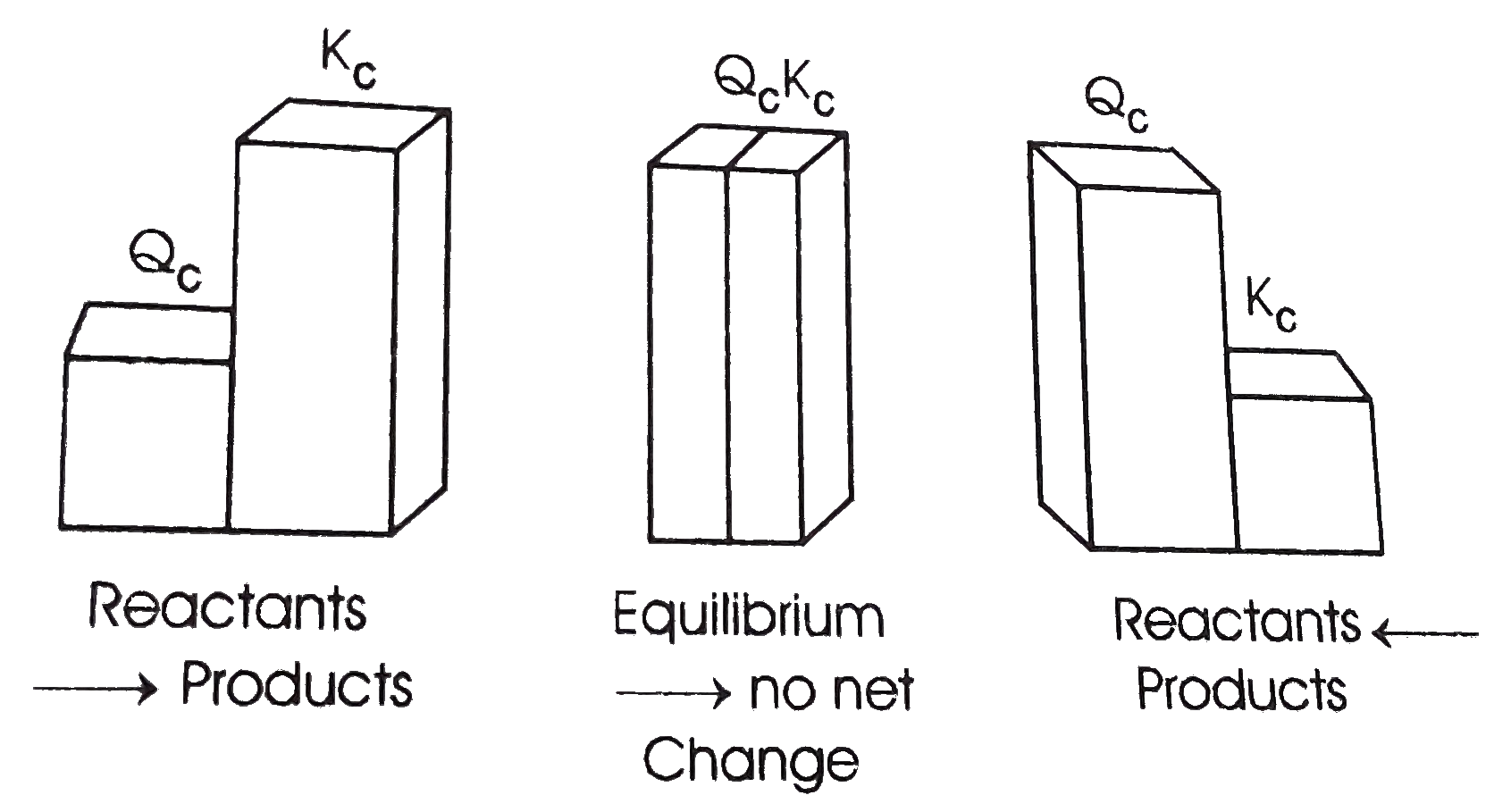
Change in Gibbs free energy, i.e., ΔG is the driving force of any reaction.
For spontaneous reaction , ΔG=−ve
For non-spontaneous reaction , ΔG=+ve
For reaction at equilibrium , ΔG=0
Thermodynamically, we know that
ΔG=ΔG∘+RTlnQ, where Q is reaction quotient and ΔG∘= change in Gibbs energy at standard condition.
For equilibrium A(g)⇔B(g)(Keq=1.732) If the pressure of the system [varied by introducing a stream of A(g) and B (g) is represented by the curve at constant temperature T.
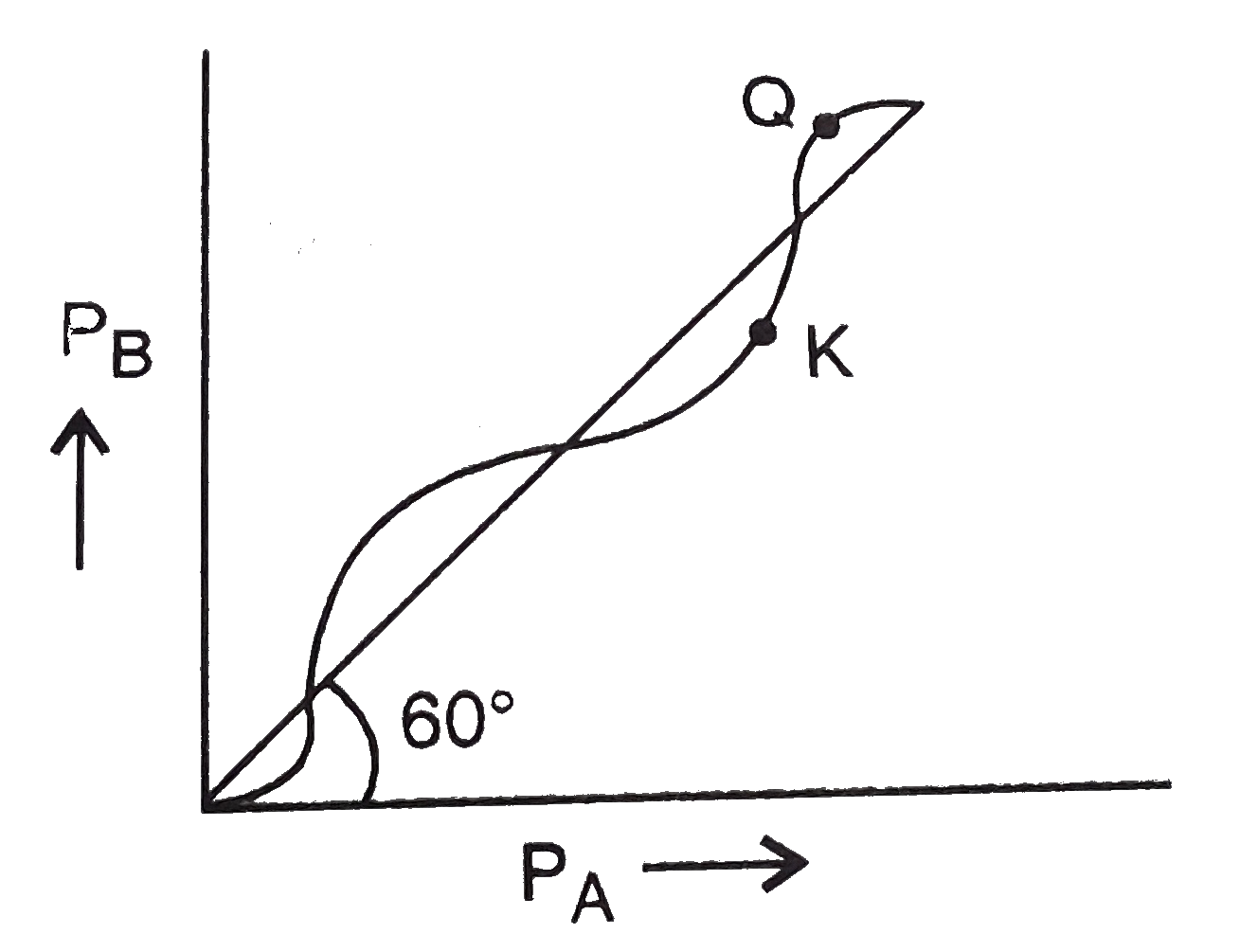
If the gaseous substances A,B,C, be in equilibrium as under :
B(g)⇐⇒A(g)10%60%
B(g)⇐⇒C(g)10%30%
then which of the following is the correct order of stability of A,B, and C in the equilibrium mixture ?
View SolutionThe reaction which is in dynamic equilibrium, ensured us, that the reaction is reversible . But if that the reaction is in equilibrium. The reaction quotient predict either the reversible reaction is in equilibrium or tries to achieve equilibrium. In those reactions which have not achieved equilibrium, we obtain reaction quotient Qc in place of equilibrium constant (Kc) by substituting the concentration of reactant and product at the time, at whih we have to calculate the value of Qc . To determine the direction at which the net reaction will proceed to achieve equilibrium, we compare values of Qc and Kc. The three possible cases are shown as comparison of Kc and Qc in the following figures.

Change in Gibbs free energy, i.e., ΔG is the driving force of any reaction.
For spontaneous reaction , ΔG=−ve
For non-spontaneous reaction , ΔG=+ve
For reaction at equilibrium , ΔG=0
Thermodynamically, we know that
ΔG=ΔG∘+RTlnQ, where Q is reaction quotient and ΔG∘= change in Gibbs energy at standard condition.
For equilibrium A(g)⇔B(g)(Keq=1.732) If the pressure of the system [varied by introducing a stream of A(g) and B (g) is represented by the curve at constant temperature T.
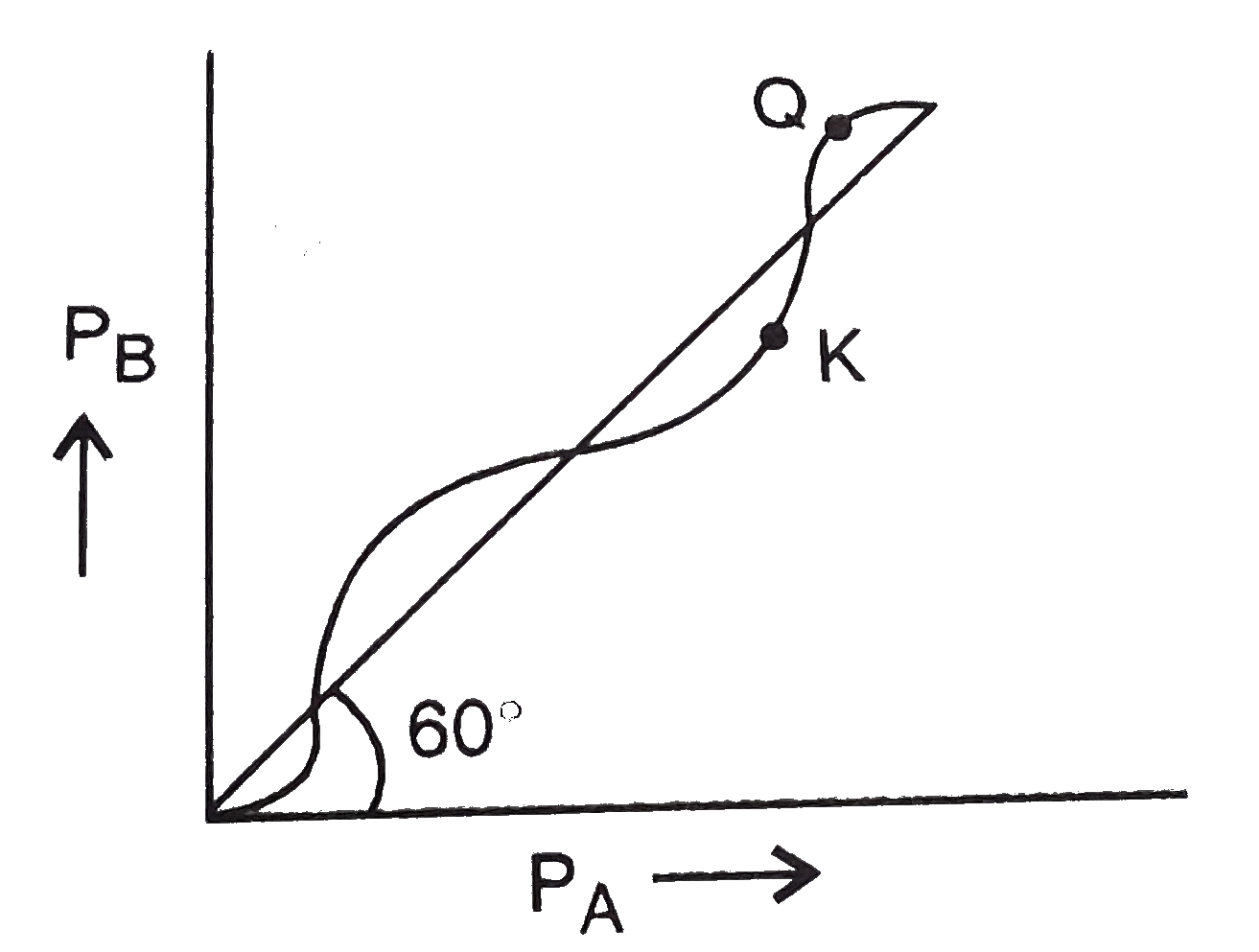
Suppose the equilibrium system
N2O4(g)⇔2NO2(g)
N2O4(g) is in a cylinder fitted with a movable piston . Which of the following statements is correct ?
View Solution
